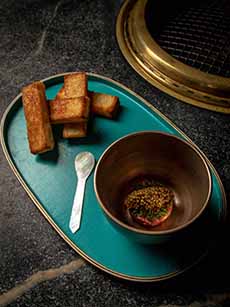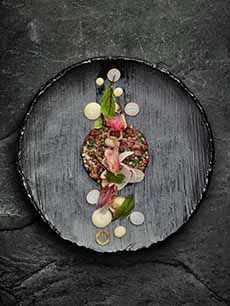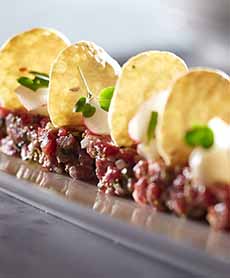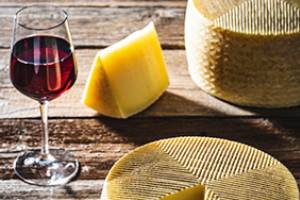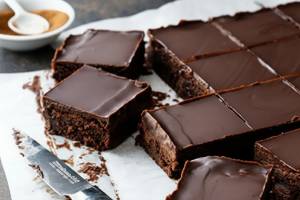RECIPE: Luscious Steak Tartare
|
We love steak tartare and order it whenever we find it on the menu. We “collect” photos of creative steak tartare platings, and do our best to recreate them at home. This one (photo #1—we’re making it for New Year’s Eve) is from New York chef David Shim, of Michelin-starred Cote, a Korean steakhouse. His tongue-in-cheek name for the dish, Steak & Eggs, pays homage to the caviar eggs on top of the tartare. The recipe is part of a dish swap that saw eight restaurants in New York City and Los Angeles swap their favorite creations, sending a taste of their signature dishes to the opposite coast. The series also supports Relief Opportunities for all Restaurants (ROAR), an organization providing direct assistance to restaurant workers, the charity partner of San Pellegrino’s “Destination Dining Series: An East Coast, West Coast Signature Dish Swap.” This is a recipe for an experienced cook. You will need good knife skills to brunoise the beef. If you need to brush up, here’s a video on how to brunoise. Remember to sharpen your knives! You’ll need ring molds to shape the portions of tartare. If your budget doesn’t allow for sturgeon caviar, use any of the affordable caviars, from salmon, trout or whitefish to these additional affordable caviar types. This is a real treat, so happy eating! Ingredients For The Steak Tartare (Per Serving) These portions are meant to be small appetizers—just a bite of a first course, with other equally scrumptious courses to follow. 1. PREPARE two small mixing bowls of similar size: one to mix the steak and one bowl to hold ice water. Have one mixing bowl filled with half ice and half water to make a proper ice bath. Put the empty mixing bowl on the ice bath. 2. BRUNOISE the tenderloin; place the beef in the mixing bowl and coat it with extra virgin olive oil. Season to taste with salt and black pepper. Place a 1.75-inch diameter ring mold/cutter into the serving bowl and fill it with the seasoned tenderloin. While filling the mold, gently press the meat down to make a firm and even base. 3. SPRINKLE chives on top of the meat and remove the portion from the mold, onto the individual serving dish. 4. QUENELLE the caviar and place it on top of the tartare. (A quenelle is an ovoid (egg) shape, made with two spoons. Here’s a video.) Preparation For The Toast 1. PREHEAT a convection oven to 375°F. 2. SLICE the loaf of bread into 1/2-inch slices. Cut the sliced bread into smaller sticks (fingers), to 3/4-inch width x 3-inches in length. 3. LINE a sheet tray with parchment paper and place the bread fingers on it. You can temper the butter for a smoother spread (it should be like mayonnaise consistency). We whisked it until it was mayo-like. 4. SPREAD ½ tablespoon of butter on each side of the bread and toast it in until it becomes golden brown. You will need 4 fingers of toast for each serving of tartare (photo #1). 5. PLATE with the tartare or serve on a separate plate, basket, etc. |
|
|
|
MORE TARTARE RECIPES While tartare was a beef dish for most of its life, creative chefs have taken the concept further. A few recipes we’ve tried:
|
||
